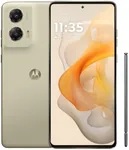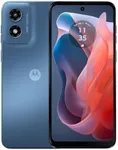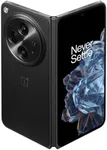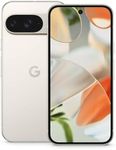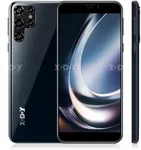Buying Guide for the Best Affordable Smartphones
Choosing an affordable smartphone can be a daunting task given the plethora of options available in the market. The key is to focus on the features that matter most to you and ensure that the phone you choose offers a good balance of performance, battery life, camera quality, and other essential features. By understanding the key specifications and how they align with your needs, you can make an informed decision and find a smartphone that offers great value for your money.ProcessorThe processor, also known as the chipset, is the brain of the smartphone. It determines how fast and efficiently your phone can run apps, games, and other tasks. For affordable smartphones, processors are usually divided into entry-level, mid-range, and upper mid-range. Entry-level processors are suitable for basic tasks like calling, texting, and light browsing. Mid-range processors offer better performance for multitasking, social media, and casual gaming. Upper mid-range processors provide a smoother experience for more demanding apps and games. Choose a processor based on your usage patterns; if you plan to use your phone for basic tasks, an entry-level processor will suffice, but for more intensive use, consider a mid-range or upper mid-range option.
RAMRAM (Random Access Memory) is crucial for multitasking and smooth performance. It allows your phone to run multiple apps simultaneously without slowing down. Affordable smartphones typically come with 2GB, 3GB, 4GB, or 6GB of RAM. 2GB of RAM is suitable for very basic use, such as calling and texting. 3GB to 4GB of RAM is ideal for moderate use, including social media, browsing, and light gaming. 6GB of RAM is better for more intensive multitasking and gaming. Consider how many apps you use at once and how demanding they are when choosing the right amount of RAM for your needs.
StorageStorage capacity determines how much data, such as apps, photos, videos, and music, you can keep on your phone. Affordable smartphones usually offer 32GB, 64GB, or 128GB of internal storage. 32GB is sufficient for users who primarily use their phone for calling, texting, and light app usage. 64GB is a good middle ground for those who take photos, download apps, and store some media. 128GB is ideal for users who need more space for apps, games, and media files. Additionally, check if the phone supports expandable storage via a microSD card, which can provide extra flexibility.
Battery LifeBattery life is a critical factor, especially if you are frequently on the go. Battery capacity is measured in milliampere-hours (mAh). Affordable smartphones typically have batteries ranging from 3000mAh to 5000mAh. A 3000mAh battery is suitable for light users who don't spend much time on their phones. A 4000mAh battery is ideal for moderate users who browse, use social media, and watch videos. A 5000mAh battery or higher is best for heavy users who play games, stream content, and use their phone extensively throughout the day. Consider your daily usage patterns to determine the right battery capacity for you.
Camera QualityCamera quality is important for capturing memories and sharing moments. Affordable smartphones often come with single, dual, or triple camera setups. The main camera's megapixel (MP) count is a good indicator of photo resolution, with higher MP counts generally offering more detail. However, other factors like aperture size, sensor quality, and software optimization also play a role. For basic photography, a single camera with 12MP to 16MP is sufficient. For better versatility, look for dual or triple camera setups that include wide-angle or macro lenses. If you enjoy photography and want more options, consider a phone with multiple cameras and higher MP counts.
DisplayThe display is your window to the smartphone's interface and content. Affordable smartphones typically feature LCD or AMOLED screens with resolutions ranging from HD (720p) to Full HD (1080p). LCD screens are common and offer good quality, while AMOLED screens provide more vibrant colors and deeper blacks. HD resolution is adequate for basic use, such as calling and texting. Full HD resolution is better for watching videos, browsing, and gaming, as it offers sharper and clearer visuals. Consider how you use your phone and choose a display type and resolution that enhances your experience.
Build Quality and DesignBuild quality and design affect the durability and aesthetics of the smartphone. Affordable smartphones are usually made of plastic or a combination of plastic and metal. Plastic builds are lightweight and can be more resistant to drops, while metal or glass designs offer a more premium feel. Consider how important the look and feel of the phone are to you, as well as how often you might drop or handle it roughly. If durability is a priority, a plastic build might be more suitable. If you prefer a more stylish and premium look, consider a phone with metal or glass elements.
Software and UpdatesThe software experience and update frequency can significantly impact your smartphone's usability and longevity. Affordable smartphones often come with Android or a custom version of Android. Look for phones that run the latest version of the operating system, as they offer better security and features. Additionally, consider the manufacturer's track record for providing software updates. Regular updates ensure your phone stays secure and performs well over time. If you value having the latest features and security patches, choose a brand known for timely updates.

